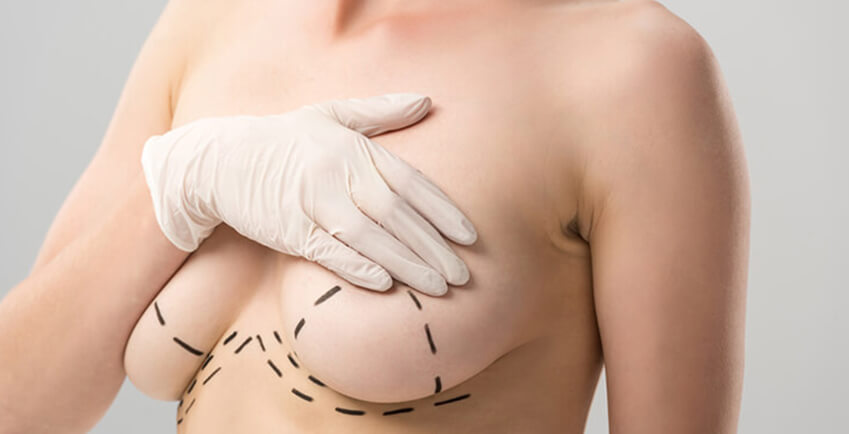Because Bigger Isn’t Always Better.
“Stan hota sabhi ke paas hai, sab chupa ke rakhte hai…”
The theatre erupted with laughter when Chatur said these famous words in 3 idiots. I for one was quite confused since I did not know the meaning of the word, and after finding out I could not understand why the Hindi word for breast was so funny.
For years these fat-filled glands have been wrapped with mystique. We are told to hide them, squash them, and make them as inconspicuous as possible. I remember being peer-pressured into bringing home my first bra at the age of 12—much before my two friends had even arrived.
But it wasn’t always like this. There was a time when our sisters in India roamed with their breasts in the air. Of course, it made no sense to hide them. It was hot, and injury to the breast was in no way life-threatening. Why the need to cover them up?
Our Western counterparts thought otherwise and extended the concept of modesty to our upper (and dare I say, better) halves. Now we follow this “tradition” long after they left, probably more strictly than ever. Today, every Woman in India is always very aware of her breasts.
Objectification made things worse. I blame the movies of the 80s and 90s that are often looked upon with innocent nostalgia. But let’s be honest, when Madhuri asked “Choli ke peeche kya hai?” Nobody was thinking about her “dil”. And somewhere between the taunts and the stares, our mammaries became a thing to be ashamed of. Something to be hidden. And that, right there, is where the real problem begins.
Thanks to awareness, we finally have women seeking medical help for breast lumps. Social media has done a decent job of talking about implants or the “boob job”. But not enough people are talking about excessively big breasts and the problems they cause. A serious issue that is often ignored due to shame and taboo. But in this curve-obsessed world, what if bigger isn’t always better?
What is Macromastia?
Macromastia is when breasts are too large for comfort. When they hang loose and low, it’s called ptosis.
Many women suffer silently. Tighter bras only bring further discomfort. Heavy breasts can cause chronic neck and back pain, and things only get worse after pregnancy or breastfeeding, when breasts can balloon by several cup sizes. They may find it difficult to walk, do chores or play with their little ones.
It’s not just the physical pain. There’s the social discomfort. Young girls getting teased can lead to body image issues and loss of self-esteem. Women shrink into oversized clothes to feel comfortable. A breast that demands attention is not always welcome. In fact, it can feel like a curse.
As plastic surgeons, we encounter two challenges: a lack of awareness about this condition, and hesitation among women to speak openly about them. But this is a very real issue causing pain and discomfort to the women we love.
How do I know if I have Macromastia?
Well, you might, if you have:
- Constant neck, shoulder, or back pain
- Bra straps cutting into your shoulders
- Rashes or fungal infections under the breast fold
- Difficulty exercising or finding clothes that fit
- Unwanted attention, body shaming, or self-consciousness
- Poor posture
- Breasts that grew rapidly after childbirth or weight gain
Are there Solutions?
YES! And excellent ones!
Breast reduction surgery, also called Reduction mammoplasty (mammo= “breast” and plasty= “shaping”) involves:
- reducing the amount of substance in the breast (we like to call that “tissue”)
- tightening of the skin to lift and reshape the remaining breast
- repositioning the nipple to match your new proportions
When can I get breast reduction?
These surgeries can be done at any age whenever you feel the need for it, though it may not be recommended before complete breast development.
How do I start?
Let’s go through the process together
- Consultation: On your first visit your surgeon will examine you and make a plan customized to your situation. You pick a surgery date if you’re ready.
- Markings: On the day of the surgery the surgeon makes markings over your breasts.
- Procedure: The procedure takes place under general anesthesia- you will be unconscious throughout. The excess tissue will be removed and your breast reshaped. Be ready to lose some instant weight!
- Drains: Small tubes are often placed to drain fluid and reduce swelling.
- Recovery: You’ll be placed in a supportive bra immediately. Pain is managed with meds.
- Post op: You may be allowed some gentle activities after the surgery, but most surgeons will advise against strenuous exercising for a few weeks.
Your surgeon and team will guide you through recovery, dressing changes, and follow-ups
Will I have scars?
Yes, there will be scars—but these are well hidden in the under-bust fold or bra area. And trust me, for most women, it’s a tiny price to pay for a lighter, more comfortable life.
Will I lose Nipple sensation?
The nipple is an important part of our breasts and we try to preserve them in most cases. The sensation (feeling of touch) to the nipple is usually unaffected by these surgeries, though in some, the sensations may already be less.
Unfortunately, in cases when the breast is very big and the nipple lies very low it may be necessary to remove the lower part of the breast along with the nipple. The skin of the nipple (graft) is then placed in the appropriate position for the new breast.
Can I breastfeed after surgery?
Yes! The surgery aims to preserve glandular tissue and function. Most women can breastfeed just fine. This may vary from case to case so be sure to ask your surgeon.
Can I pick my new breast size?
Your surgeon may be able to give you an approximation but accurately guessing the cup size is tricky. Remember every brand’s sizing is different.
Choose Your Surgeon Wisely
Do your research and approach a trained Plastic or Breast surgeon but remember not all specialize in reduction surgery. Find someone who understands your goals and communicates clearly. Once you are comfortable TRUST THE PROCESS!
Breast reduction is not a cosmetic indulgence. For many women, it’s a life-changing solution to physical and emotional pain. Women who undergo this procedure often return with a renewed sense of freedom. Freed from the constant discomfort and self-consciousness, they move easier, sleep better, and reclaim the ability to do things—like playing with their children, going for walks, or simply wearing what they want without worry. There’s a lightness in their step, a brightness in their smile.
So, if you, or someone you love, has been quietly carrying this burden, know this:
There is an answer. There is support. And You deserve to feel good in your body.
Let us start the conversation, destigmatize breasts, and lift the weight together!
Dr. Anjali Chandola
Associate IAAPS member
(Awaiting Membership number)
Ph. No. +919987722770
Disclaimer : The opinions here are personal views of the authors. IAAPS is not responsible. All members may not have the same scientific view point

